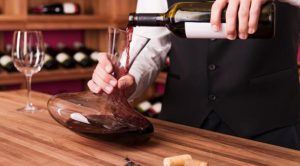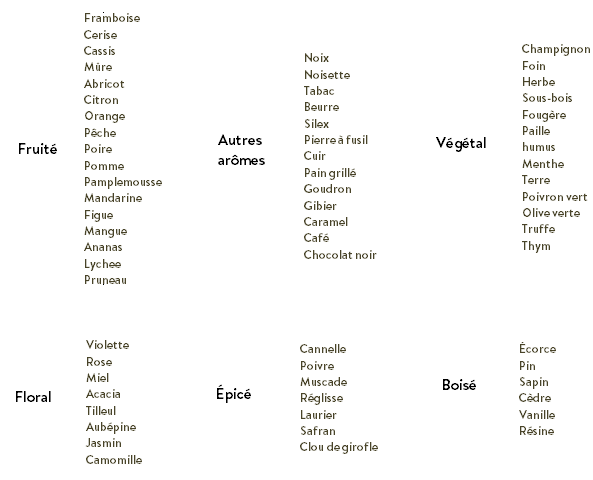Learn to taste a great wine easily
Someone close to you has just given you the bottle of grand cru wine of your dreams! But how do you enjoy this superb wine in the best possible conditions? Today, the Comptoir des Millésimes has decided to help you enjoy your vintage wines the way they should be enjoyed!
Wine comes in all price ranges, but the same tasting rules apply to every wine. Here are 5 rules to help you meet every aroma in your bottle.
How to enjoy a great wine in ideal conditions?

Before your tasting, remember not to deceive your senses. Taste and smell, in particular, will be your greatest assets. So remember not to smoke or brush your teeth before tasting wine. Drinking coffee or beer isn't ideal either. These actions are incompatible with enjoying your vintage wine to the full.
Alan de Belloy, director of a leading oenology school, "Prodégustation", warns wine lovers on the subject: "It's complicated to appreciate a bottle in this configuration. All the senses are no longer alert, and the taste buds are not at their best".
Give your wine a moment to air out

To enjoy your bottle of wine at its best, you need to let it air out a little. Wine evolves not only in the open bottle, but also in the glass. To simplify matters, the wine will seem better shortly after opening. It will then reach a phase in which its qualities will express themselves to the full. The influence of oxygen allows wine to develop in two ways:
. Broadcasting
Oxygen promotes the diffusion of wine aromas, accentuating their "volatility".
. Creating aromas
Oxygen will create new aromatic compounds in the wine: this is why the wine's nose evolves in just a few minutes in your glass. It will evolve even faster if you pour it into a decanter.
. The little tricks
A very young wine will need more time to air than an old wine. A 30-year-old wine will need very little time to become optimal.
To decant your wine, simply pour it gently, very slowly and continuously. This will not only leave all the deposits in the bottle, but also allow the wine to develop its aromas more or less rapidly, depending on its exposure to air.
What are the common mistakes made when tasting a grand cru?
Some wine lovers have bad habits. White wine in the fridge, extra cold, and red on the kitchen shelf. Reflexes to be avoided if you want to preserve your wine and enjoy it to the full. Only sweet white wines can be enjoyed below 10 degrees Celsius. To enjoy a dry white wine, consume it at around 12 degrees. Ideally, fruity red wines should also be enjoyed at this temperature, rather than at room temperature. Cold temperatures tend to harden tannins and bring out bitterness, while hot temperatures inhibit aromas and bring out alcohol.
. Here's our temperature guide:
Great Bordeaux red wines : 17-18°
Great red Burgundy wines : 16°
Great red wines before their peak: 15-16°
Great dry white wines : 13-14°
Light, fruity, young red wines: 13-14°
Rosé wines and vins de primeur : 10-12°
Dry white wines and red vins de pays : 10-12°
Petits blancs and vins de pays blancs : 8-10°
Champagne and crémant : 7-8°
Non-vintage champagne : 8°
Vintage Champagne : 10°
Champagne vieux millésime : 12°
Liquid : 7-8°
Take your glass with both hands
During an evening out, you might carelessly pick up the glass by the part where the wine is. A mistake! This could ruin your tasting experience. When your hand comes into contact with this part, it heats up the wine, and the taste could also be altered. Pay attention to this detail. Ideally, hold the glass by the stem.
Ready to taste?
Here we are. Time to enjoy your precious gift. It's an action that's both simple and complex. Your mission is to approach the wine, discover its nature and origins, and assess whether or not it is still capable of developing. Of course, this is a job in itself, but try to discover as many aromas as possible, every aspect of the wine. Here are the tasting phases:
. The dress
The first approach to wine is very important. You need to observe the wine in your glass. Determine its color, intensity and tonality. Wine color evolves with age. A red wine will have a wide range of colors as it develops, from blue/purple, through red, to orangey yellow. A good wine should be brilliant (especially in white) and limpid.

. What is the wine nose?
The first nose:
Dip your nose inside the glass and inhale generously. You need to determine your first impressions straight away. Try to assess its character and intensity. If you succeed in finding certain aromas, the wine will be "open"; if not, it will be "closed".
In the families: floral, green/black/red fruit, citrus, spicy, vegetal, mineral, empyreumatic.
The second nose:
Swirl the glass with your fingertips: this will bring the wine into contact with the air and should release the aromas it contains.
You find that it has a very concentrated, more intense aroma. In this case, consider decanting. If not, don't decant. The wine must have reached maturity, and this could degrade it. Identify new aromas, your sensory analysis will now be more advanced.
Many aromas can be identified in a wine. Here are the most common:

. What is the mouth of wine?
It's important to give the wine a good swirl in the mouth. You need to identify complementary sensations: sweetness, saltiness, acidity and bitterness.
. The attack: Identify your first sensation: disappointing or frank? Rather intense? During the first two or three seconds in the mouth. Is it round, soft or lively?
. The middle: on the tongue, numerous flavors develop. This is the tasting stage, where the so-called "thermal" effects of alcohol are revealed. These effects include astringency, tannins and viscosity.
. The finish: in this phase, you'll feel the full persistence of the aromas, in seconds in the mouth.
Now you know all the key stages of wine tasting! Enjoy your vintage wines to the full!
We hope you enjoy your tastings.
► Find all our grands crus at the best price on Comptoir des Millésimes ◄
Feed has no items.
- Feed has no items.





![✨ Comptoir des Millésimes honors Champagne's great winemakers ✨[LINK TO THE ORGANIC CELLAR]We've selected 11 exceptional estates that reveal the full richness of Champagne terroir through unique, refined cuvées. Hugues Godmé - In Verzenay, this family-run biodynamic estate offers precise, vibrant champagnes with a beautiful mineral tension.Egly-Ouriet - A benchmark for the Montagne de Reims, its powerful champagnes, aged for long periods in barrel, impress with their complexity.Moussé Fils - In Cuisles, the Meunier grape is king. Pertois-Moriset - Pure, taut Chardonnay Grands Crus for lovers of chalky finesse. A fine address in Mesnil-sur-Oger.Geoffroy - In Aÿ, this domaine produces fine champagnes, carefully crafted and barrel-aged to reveal the full complexity of the terroir.Larmandier-Bernier - Biodynamic viticulture, exceptional parcels and purity. Crystal-clear, intense champagnes for connoisseurs.Roger Coulon - Eight generations of expertise at Vrigny. Balanced, subtle and elegant champagnes.A. Bergère - In Avize, a dynamic house offering expressive, fruity and accessible cuvées.Adrien Renoir - A promising talent from Verzy, he produces fine, complex champagnes with a true sense of terroir.De Sousa - Emblematic house in Avize. Richness, depth, long ageing: Chardonnay at its peak.Pierre Paillard - In Bouzy, the family magnifies Pinot Noir with vinous, racy and sincere cuvées.📦 Order now on our website#ComptoirdesMillésimes #Champagne #VigneronsIndépendants #GrandVin #ChampagnesdeTerroir #LivraisonRapide](https://www.comptoirdesmillesimes.com/blog/wp-content/plugins/instagram-feed/img/placeholder.png)